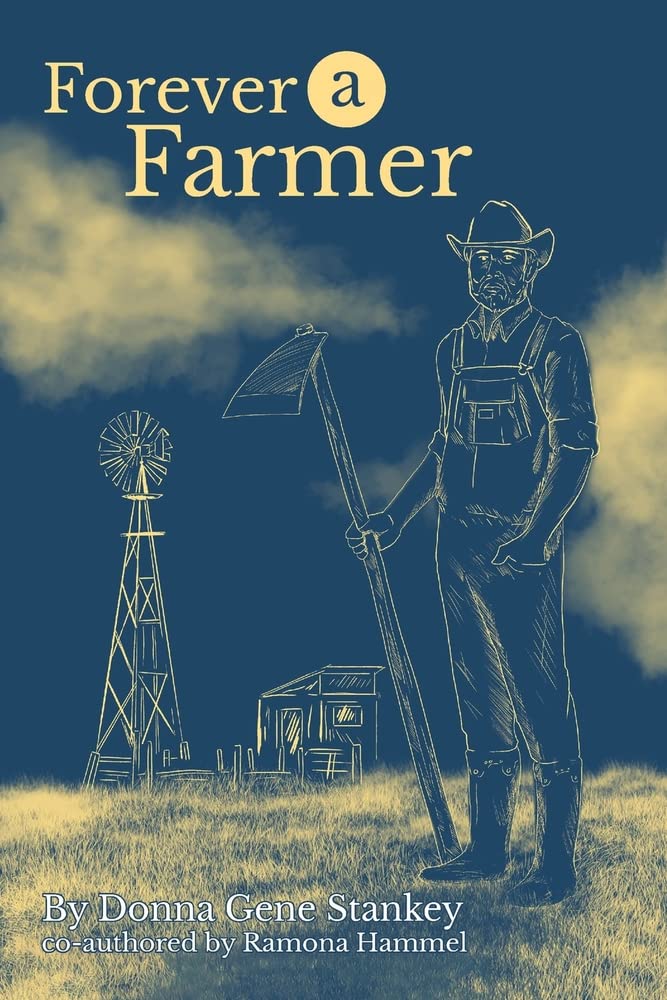Title: Forever a Farmer
Language : English
Paperback : 248 pages
ISBN-10 : 1958920118
ISBN-13 : 978-1958920114
Item Weight : 13 ounces
Dimensions : 6 x 0.56 x 9 inches
book review by Mihir Shah
“He thought of the virgin fields, and that he had been the first person to put some of this land into cultivation.”
The land is often emblematic of our loyalty, with entire life spans sometimes revolving around one piece of earth. The land bears witness to the joys and sorrows and, in many ways, becomes a confidante. In the tale, Stankey’s father, Ralph, is undoubtedly the main protagonist as his actions and experiences, particularly with family and friends, are consistently in the spotlight throughout the book. While the story is of a farmer, his land, and all the interconnected experiences and emotions therein, the story is just as much one of strong bonds, family, nature, and the essence of being human.
In one of the first scenes, Ralph, often called Rate in his earlier years in honor of his grandfather, is seen racing his buggy with Miss Kate, a longtime school teacher. This is the first introduction of the bond that Ralph and Pearl, his horse, have, and one that is the epitome of true friendship. Shortly thereafter, the authors show their ability to weave humor into the narrative when sixteen-year-old Ralph is taking his mother to church, a place he himself has forsaken. Then, to protect his buggy from going into the mud, he has Pearl make a dead stop, resulting instead in his mother and her impeccable Sunday dress being doused in mud. The refreshing nature of the love of animals is on full display with Pearl and his childhood pup, Bruno. This intimate connection with animals effectively creates instant relatability with all audiences.
While the relationships with animals are pure and thoroughly heartwarming, there is a strong sense of history repeating itself between the generations. First, it is Horatio “Rate” Setterington leaving out his son, Millie, from the north eighty, land that Millie had spent years farming when the rest of his siblings really had no direction. This creates a bitterness between Millie and his parents that trickles down and is evident for the younger generations to see. Perhaps the surprising element here is that when Millie is in the same position, he leaves Ralph completely out of his will. Unsurprisingly, the latter is upset as he is clearly the most deserving and has tilled the family farm while opting out of his own farm. Nevertheless, his reaction, with the support of his sister, Blanche, is drastically different and far more empathetic.
Many stories run concurrently throughout Stankey’s narrative, yet each is seamlessly intertwined with meaning. Deviating from simply imbuing the work with every fact imaginable about the family, the authors successfully deliver a storyline of meaningful moments that give the reader an impressionable snapshot of what those individuals were like. For instance, during Ralph’s school days, he sneaks a harmless baby garter snake into a classroom full of girls to take delight in the sound of their screams before coming to the rescue. Ralph’s evolution from a free-spirited prankster who can punch the superintendent for not giving him credit for an agriculture class to someone who is incredibly mature comes with Edith, fatherhood, and making friends with the neighbors, particularly Vern Brewbaker.
This work not only captures the lives of generations of Stankey’s family but also provides incredible insight into the time, especially with major events like the assassination of Archduke Ferdinand in 1914. Above all else, this book is nothing short of a time capsule, revealing the importance of farmland, family, and even one’s word—and the implications of breaking it. From Horatio to Millie and Ralph to Blanche, the dynamic nature of the characters will undoubtedly make readers gravitate to their respective stories.
 Get free shipping for every purchased of over $70
Get free shipping for every purchased of over $70 
